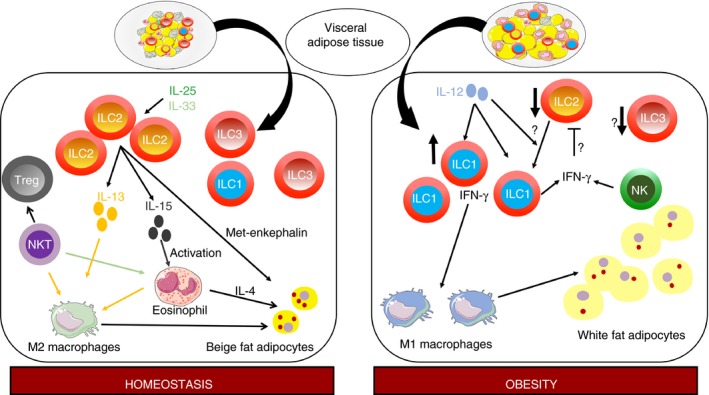Figure 2.

Innate lymphoid cells (ILCs) in the visceral adipose tissue. In homeostasis conditions, the visceral adipose tissue is infiltrated by ILC2 in response to locally produced interleukin‐33 (IL‐33) and IL‐25. Through their production of IL‐5 and IL‐13, they activate on the one hand eosinophils and on the other hand alternately activated M2‐type macrophages, leading to the beiging of adipocytes. Natural killer T cells are also involved in homeostasis through their activation of eosinophils and T regulatory cells. ILC1 and ILC3 are also present although their function at baseline is unclear. In obesity, ILC2 and potentially ILC3 are decreased, whereas ILC1 are increased in response to locally produced IL‐12. ILC1 activate classically activated M1‐type macrophages that promote obesity‐associated insulin resistance. Putatively, decreased ILC2 number may originate from a conversion of ILC2 in ILC1, or from inhibition of ILC2 by ILC1 and natural killer cells through their production of interferon‐γ.
